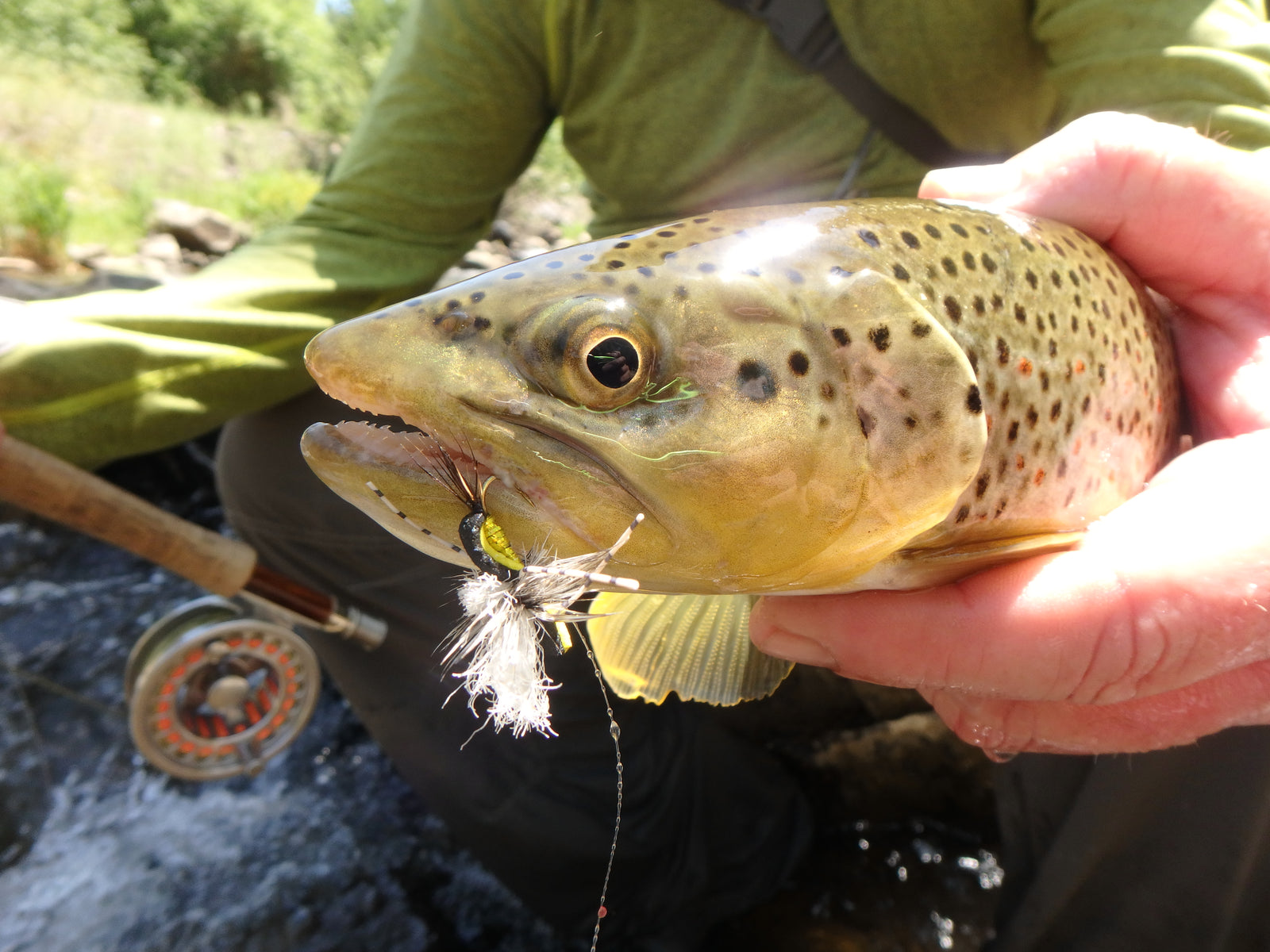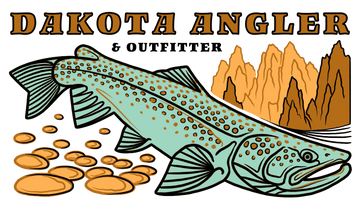- Two is better than one - This seems like a really obvious point, but it's one that many people simply overlook. Most nymph fishermen almost always fish two flies, but balk at the idea of fishing a dry fly instead of an indicator. This makes very little sense to us, because we've never caught a fish on a Thingamabobber! During late summer, trout become extremely opportunistic, and will readily eat both nymphs and surface flies, oftentimes within just a few seconds of each other. A fish that might not eat your double nymph rig may be more than willing to come eat a beetle or hopper pattern. If you're fishing an indicator, you'l never know the fish would have eaten a dry fly. Another thing to keep in mind, and one that I've been doing a lot this year is fishing two nymphs below a big dry fly. It's really not that terrible to cast, and ends up giving you the same opportunity on the nymphs as you would have with a regular bobber rig.
- Castability - The biggest pain with an indicator rig in most circumstances is that they're not the most elegant casting setups, and can be hard to get into tight spots - not to mention the tangles that you're going to get in the process. A dry-dropper setup casts much cleaner, and you can fish it in a lot tighter spots and cast it much more accurately than a similar nymph rig. Because you can sneak casts into more places and be fighting less tangles, you end up fishing more in places that you wouldn't typically fish with a standard nymph rig, and you catch fish that you might not normally get a chance to fish to. After having a lot of clients fish dry-dropper rigs, I find that we get tangled much less frequently and we spend more time actually fishing.
- Strike Detection - After guiding a lot this summer and comparing how different setups work, I've found one of the biggest differences between an indicator rig and using a dry fly for your indicator is that the strikes are much easier to detect and see with a dry. When a fish takes a nymph pattern under an indicator, it oftentimes just stops or twitches rather than submerging completely due to the buoyancy of the bobber. When you get a strike with a dry fly, there's generally no second guessing it. A dry fly is much less buoyant and when it goes down, it has less of a tendency to want to come back up to the surface. Also, dry flies sit much higher on the surface of the water so it's easier to see when they submerge. Seeing your bites sooner equates to catching more fish!
3 Reasons To Fish A Dry-Dropper Rig

Ryan Gabert |
Some of our favorite fishing of the year is in August and September fishing with dry-dropper setups. Not only is this setup incredibly effective, it's also a really fun way to fish! If you run into us out fishing this time of the summer, whether it be guiding or fishing on our own you'll stand a good chance of seeing a dry-dropper rig on the end of our rods. There's a few reasons that this rig is one of the most popular across the western United States, as well as around the rest of the world - here's three that we think are good enough reason to make you rig one up!
